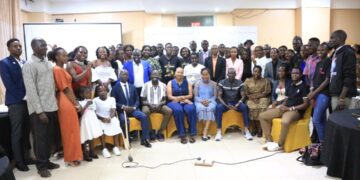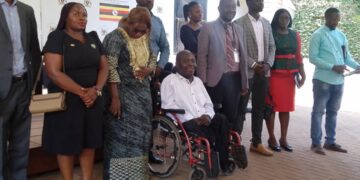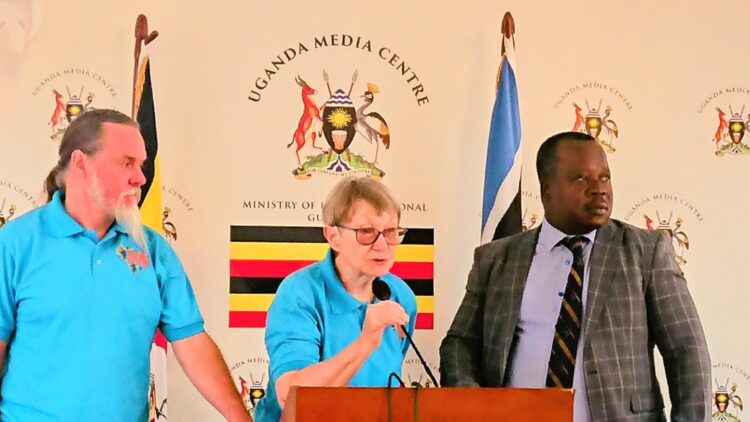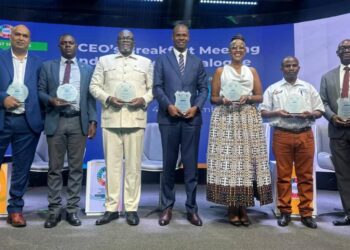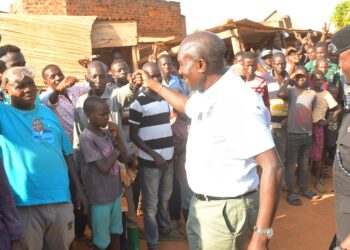By Leonard Kamugisha Akida,
KAMPALA
Lightning continues to claim the lives of school children across Uganda due to poor or non-existent lightning protection in schools, prompting renewed calls for stricter building standards and nationwide education on lightning safety.

Experts working to improve lightning protection in Uganda have revealed that children are the most at-risk group, often struck while in classrooms that lack proper safeguards. According to Dr. Mary Anne Cooper, the Executive Director of African Centres for Lightning and Electromagnetics Network (ACLENet), lightning frequently strikes the metal roofs of school buildings, causing the electrical charge to disperse through the structure and into the pupils inside.
“When we did our research, we found that the people that were most likely to be killed by lightning in Uganda were school children. We found many are killed or injured inside their classrooms,” said Dr. Cooper.
Uganda is one of the most lightning-prone countries in the world, recording an estimated 70 strikes per square kilometer annually. Between 2007 and 2022, the country recorded at least 191 lightning-related deaths and 727 injuries, according to compiled figures. The majority of these incidents occurred during afternoon storms, often as children sought shelter under trees or in poorly protected school buildings.
Experts say misconceptions about the nature of lightning are widespread and dangerous. “Many people in Uganda believe lightning is caused by witchcraft, demons, or sin. But lightning is a natural atmospheric phenomenon,” Dr. Cooper clarified. “It hits Uganda numerous times a year. It doesn’t care if you’re wearing red or using a cell phone. It just hits.”
They also raised concerns over lack of modern international standards for lightning protection, which they say are often ignored in school and homes construction.
“When you go to the schools you’ll see an arrestor, one arrestor on a building for the entire school. People think that one lightning arrestor on a school is enough, it is not,” said ACLANet Executive Director.
To address this challenge, ACLENet partnered with the government of Uganda to provide life-saving Lightning Protection Systems to fortify schools against lightning threats. The organization has so far installed proper lightning protection in nine schools across the country.
“Modern standards require a full system designed to safely direct the energy to the ground. That’s what we want to introduce widely in Uganda,” they added.

Prof. Nixon Ken, an expert on lightning systems at ACLANet, cautioned that while it’s impossible to offer total protection in every scenario, deliberate designs can significantly reduce casualties. “You cannot prevent lightning, but you can direct it. Proper systems ensure it hits where we want it to, and not people.”
Charles Komakech, an official from the Office of the Prime Minister has acknowledged the problem, calling for stronger legislation: “We need a disaster bill. If you build a school without proper lightning arresters and students die, you should be held accountable. It is time to stop substandard work.”
During the conference, ACLANet revealed that they are working closely with the Uganda Institution of Professional Engineers to train engineers and designers on lightning protection systems and is promoting safety education in schools.
“Most homes in sub-saharan Africa, and in rural Uganda are not lightning-safe,” they noted. “A lightning safe building is one that has lightning protection or has wiring and plumbing and metal components within its walls. It doesn’t have to have lightning protection as long as it has those other things within the building.”
The team appealed to the media to actively help in demystifying lightning and educating the public. “Every time lightning strikes, tell the truth. It’s not a curse. It’s not witchcraft. It’s science, and we can protect people from it.” Dr. Cooper urged.
The experts commended government efforts to reduce lightning-related deaths in Uganda, emphasizing the need to protect school children, homes, enforce building standards, and educate the nation on lightning protection and prevention of injuries.
“Education and safe shelter are the two components of saving lives,” they added.
Last week on Thursday, two pupils at Rwengiri primary school in Kigarama, Sheema district lost their lives after a deadly lightning struck their school, injuring 15 others. The deceased were identified as Isabella Kemigisha, a Primary Three pupil, and Benson Beinomugisha, a Primary One pupil. The injured pupils were included; Akatukunda Blessing, Nuwamanya Sheldon, Kwikiriza Binaisa, Abaasa Seith, Akankwasa Blossom, Owokunda Poline, Turibamwe Alvin, Mpumwire Racheal, Ainomugisha Alicious, Mutaka Andrew, Owembabazi Vanisha, Ampiire Shanirah, Mutesi Rinah, and Mathias Twinomuhangi. They were rushed to Bushenyi Medical Centre (BMC) Kabwohe, for treatment and were later discharged after gaining consciousness, according to the school headteacher, Benards Bangirana.
The incident sparked calls for urgent installation of lightning arrestors in schools and public building across lightning-prone areas. It should be noted that about 13 years ago, the government directed all schools to install these gadgets, however, many are yet to comply. With ACLANet on board, there’s a brim of hope that the surge in lightning deaths will be partially reduced in Uganda.















